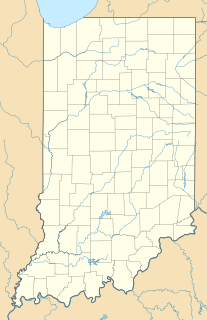
Herring are forage fish, mostly belonging to the family Clupeidae.

Verbesina, or crownbeard, is a genus of flowering plants, in the daisy family (Asteraceae). It is a large genus of over 300 species.

A near-threatened species is a species which has been categorized as "Near Threatened" (NT) by the International Union for Conservation of Nature as that may be vulnerable to endangerment in the near future, but it does not currently qualify for the threatened status.

An IUCN Red List Critically Endangered (CR) species is one that has been categorized by the International Union for Conservation of Nature as facing an extremely high risk of extinction in the wild. As of 2021, of the 120,372 species currently tracked by the IUCN, there are 6,811 species that are considered to be Critically Endangered.

Miramar is a city near the southeastern tip of the state of Tamaulipas in Mexico. It is the largest city in the municipality of Altamira and third largest of the Tampico Metropolitan Area. The city had a 2010 census population of 118,614, the seventh-largest community in the state, having passed Río Bravo since the previous census.

A species that is extinct in the wild (EW) is one that has been categorized by the International Union for Conservation of Nature as known only by living members kept in captivity or as a naturalized population outside its historic range due to massive habitat loss.
Roupala brachybotrys is a species of plant in the family Proteaceae. It is endemic to Ecuador.

Ruprechtia is a genus of plant in family Polygonaceae. It contains the following species :

Ternstroemia is a genus of flowering plants in the family Pentaphylacaceae. It is distributed in tropical and subtropical regions in Africa, Asia, and the Americas.
Ternstroemia howardiana is a species of plant in the Pentaphylacaceae family. It is endemic to Jamaica.
St. George Orthodox Church is the biggest church in Chungathara, Kerala, India. It was built before 1960.

Young is an unincorporated community in Brown Township, Morgan County, in the U.S. state of Indiana.
Bat Conservation International (BCI) is an international nongovernmental organization working to conserve bats and their habitats through conservation, education, and research efforts.

Mərcimək is a village in the Kalbajar District of Azerbaijan.

Stara Maszyna is a village in the administrative district of Gmina Sierakowice, within Kartuzy County, Pomeranian Voivodeship, in northern Poland. It lies approximately 2 kilometres (1 mi) south-east of Sierakowice, 19 km (12 mi) west of Kartuzy, and 47 km (29 mi) west of the regional capital Gdańsk. Kashubian vetch is native to the village.

Wudao Kou Station is a station on Line 13 of the Beijing Subway. As its name suggests, it is situated in the Wudaokou area of Haidian District.

Kopljare is a village in the municipality of Aranđelovac, Serbia. According to the 2002 census, the village has a population of 1024 people.

The World's 25 Most Endangered Primates is a list of highly endangered primate species selected and published by the International Union for Conservation of Nature (IUCN) Species Survival Commission (SSC) Primate Specialist Group (PSG), the International Primatological Society (IPS), Global Wildlife Conservation (GWC), and Bristol Zoological Society (BZS). The IUCN/SSC PSG worked with Conservation International (CI) to start the list in 2000, but in 2002, during the 19th Congress of the International Primatological Society, primatologists reviewed and debated the list, resulting in the 2002–2004 revision and the endorsement of the IPS. The publication was a joint project between the three conservation organizations until the 2012–2014 list when BZS was added as a publisher. The 2018–2020 list was the first time Conservation International was not among the publishers, replaced instead by GWC. The list has been revised every two years following the biannual Congress of the IPS. Starting with the 2004–2006 report, the title changed to "Primates in Peril: The World's 25 Most Endangered Primates". That same year, the list began to provide information about each species, including their conservation status and the threats they face in the wild. The species text is written in collaboration with experts from the field, with 60 people contributing to the 2006–2008 report and 85 people contributing to the 2008–2010 report. The 2004–2006 and 2006–2008 reports were published in the IUCN/SSC PSG journal Primate Conservation,, since then they have been published as independent publications.












